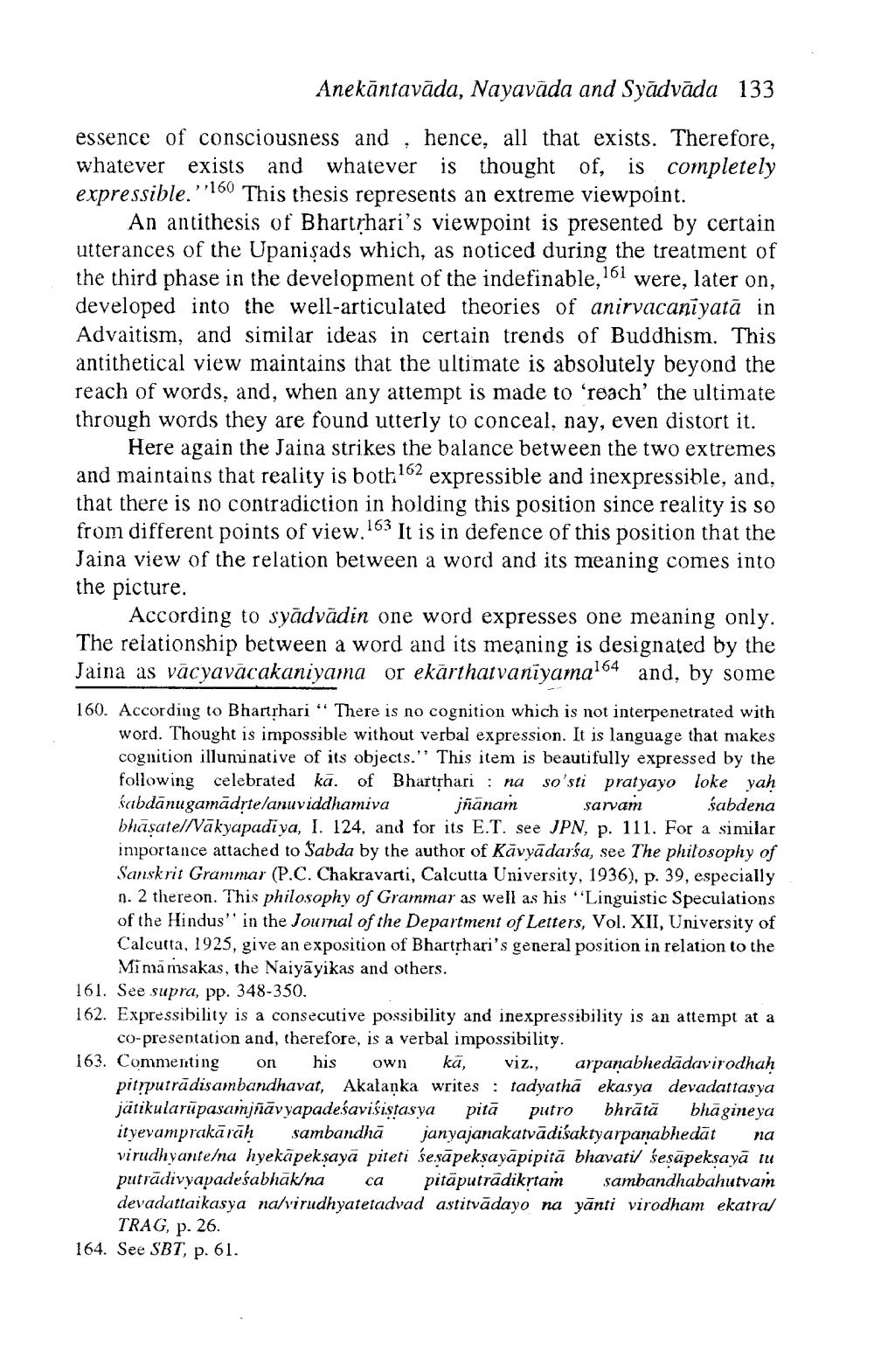________________
Anekāntavāda, Nayavāda and Syādvāda 133
essence of consciousness and , hence, all that exists. Therefore, whatever exists and whatever is thought of, is completely expressible.”:160 This thesis represents an extreme viewpoint.
An antithesis of Bhartrhari's viewpoint is presented by certain utterances of the Upanişads which, as noticed during the treatment of the third phase in the development of the indefinable,161 were, later on, developed into the well-articulated theories of anirvacaniyatā in Advaitism, and similar ideas in certain trends of Buddhism. This antithetical view maintains that the ultimate is absolutely beyond the reach of words, and, when any attempt is made to reach the ultimate through words they are found utterly to conceal, nay, even distort it.
Here again the Jaina strikes the balance between the two extremes and maintains that reality is both.162 expressible and inexpressible, and, that there is no contradiction in holding this position since reality is so from different points of view.163 It is in defence of this position that the Jaina view of the relation between a word and its meaning comes into the picture.
According to syādvādin one word expresses one meaning only. The relationship between a word and its meaning is designated by the Jaina as vācyavācakaniyama or ekārthatvanīyamal64 and, by some 160. According to Bharthari " There is no cognition which is not interpenetrated with
word. Thought is impossible without verbal expression. It is language that makes cognition illuminative of its objects." This item is beautifully expressed by the following celebrated ka. of Bhartphari : na so'sti pratyayo loke yah sabdanugamadrtelanuviddhamiva jñanam sarvam ś abdena bhasatel/Vākyapadiya, I. 124, and for its E.T. see JPN, p. 111. For a similar importance attached to Sabda by the author of Kavyādarśa, see The philosophy of Sanskrit Grammar (P.C. Chakravarti, Calcutta University, 1936), p. 39, especially n. 2 thereon. This philosophy of Grammar as well as his "Linguistic Speculations of the Hindus" in the Journal of the Department of Letters, Vol. XII, University of Calcutta, 1925, give an exposition of Bharthari's general position in relation to the
Mima msakas, the Naiyāyikas and others. 161. See supra, pp. 348-350. 162. Expressibility is a consecutive possibility and inexpressibility is an attempt at a
co-presentation and, therefore, is a verbal impossibility. 163. Commenting on his own kā, viz., arpanabhedādavirodhah
pityputrādisambandhavat, Akalanka writes : tadyathā ekasya devadattasya jätikularūpasamjñāvyapadeśavisistasya pitā putro bhrātā bhāgineya ityevamprakārāh sambandhā janyajanakatvādiśaktyarpanabhedāt na virudhyantelna hyekāpeksayā piteti se.sāpeksayāpipitā bhavati/ sesapeksayā tu putrādivyapadeśabhāk/na ca p itāputrādikrtam sambandhabahutvam devadattaikasya na/virudhyatetadvad astitvādayo na yānti virodham ekatral
TRAG, p. 26. 164. See SBT, p. 61.




